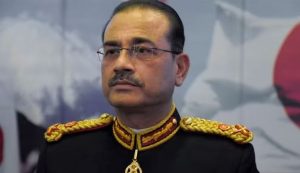Pak govt secured $26.7 billion in loans in last fiscal year: Report

Islamabad: Pakistan secured a record $26.7 billion in foreign loans during the last fiscal year, according to a media report that said it indicates the country’s deepening dependence on multilateral and bilateral creditors.
Nearly half of these loans were in the form of rollovers of previously obtained loans, The Express Tribune newspaper reported.
The $26.7 billion disbursed during the fiscal year 2024-25 was slightly higher than the preceding fiscal year, the report said citing data compiled by the Ministry of Economic Affairs, the State Bank of Pakistan (SBP) and the Ministry of Finance.
Of the $26.7 billion in foreign loans, only $3.4 billion or nearly 13 per cent was received for project financing, details released by the Ministry of Economic Affairs on Tuesday revealed.
Such low receipts for project financing underscore the difficulties in repaying the loans, as most foreign borrowings are used for budgetary support and to build foreign exchange reserves, neither of which generates revenues for repayment.
The central bank’s gross foreign exchange reserves of $14.5 billion as of end-June are largely the result of rollovers, refinancing of existing loans, and some fresh borrowing. This highlights Pakistan’s growing reliance on foreign creditors, making economic stability increasingly vulnerable.
According to the details, the Ministry of Economic Affairs booked $11.9 billion on the federal government’s accounts, about $1.2 billion higher than the previous fiscal year. The International Monetary Fund (IMF) disbursed $2.1 billion, while another $12.7 billion came as rollovers of cash deposits from Saudi Arabia, China, the United Arab Emirates, and Kuwait.
Saudi Arabia has placed $5 billion in cash deposits with Pakistan’s central bank, charging a 4 per cent interest on the loans. The amount is rolled over annually as Islamabad remains unable to repay. Interestingly, the IMF’s three-year programme is predicated on the continued rollover of these $12.7 billion loans, casting doubt on the depth of external sector stability.
China has placed $4 billion in cash deposits, charging over 6 per cent in interest. The UAE has deposited $3 billion with the central bank. China also disbursed $484 million in guaranteed loans in the last fiscal year, used primarily for asset purchases.
Pakistan failed to tap international capital markets last fiscal year and its planned $1 billion borrowing through Eurobonds and Panda bonds did not materialise. Instead, the government and central bank secured an expensive foreign commercial loan, backed by multilateral guarantees, to bridge the gap.
With Pakistan’s credit rating in junk status, the country remains locked out of global capital markets and must pay high interest rates on commercial loans and cash deposits.
The finance ministry managed to secure $4.3 billion in commercial loans, mostly refinanced Chinese loans and others backed by guarantees from the Asian Development Bank (ADB).
The ADB disbursed $2.1 billion in new loans, $500 million more than budgeted. Multilateral institutions contributed $6.9 billion overall, including $2.1 billion from the IMF.
The World Bank released $1.7 billion, $300 million short of the budgeted amount, and has not announced any new budget support loan for the current fiscal year.
The Islamic Development Bank disbursed $716 million, and Saudi Arabia gave $200 million under an oil financing facility secured at 6 per cent interest, making it an expensive loan.
Pakistan’s debt-to-GDP ratio and gross financing needs-to-GDP ratio currently exceed sustainable levels, according to the Ministry of Finance. A gross financing need exceeding 15% of GDP is considered unsustainable. The Ministry of Finance’s previous projections suggest Pakistan will remain above that threshold for at least the next three years.
PTI
News